

— Products —
 Consumer hotline +8618073152920
Consumer hotline +8618073152920 WhatsApp:+8615367865107
Address:Room 102, District D, Houhu Industrial Park, Yuelu District, Changsha City, Hunan Province, China
All products
Soil moisture sensor for agriculture plays an important role in irrigation management, crop growth monitoring and resource conservation with the following roles and values:1. Precision irrigation: Soil moisture sensors can monitor the water content in the soil in real time, helping farmers to precisely control the amount and frequency of irrigation to avoid over- or under-irrigation, thus improving irrigation efficiency and saving water.2. Crop growth monitoring: By monitorin···
Tel/WhatsApp:+8615367865107
Email:Arvin@niubol.com +Nearly 100 partner company in more than 68 countries. We are committed to providing high-quality, practical products to meet your needs and help you solve problems.Product Details
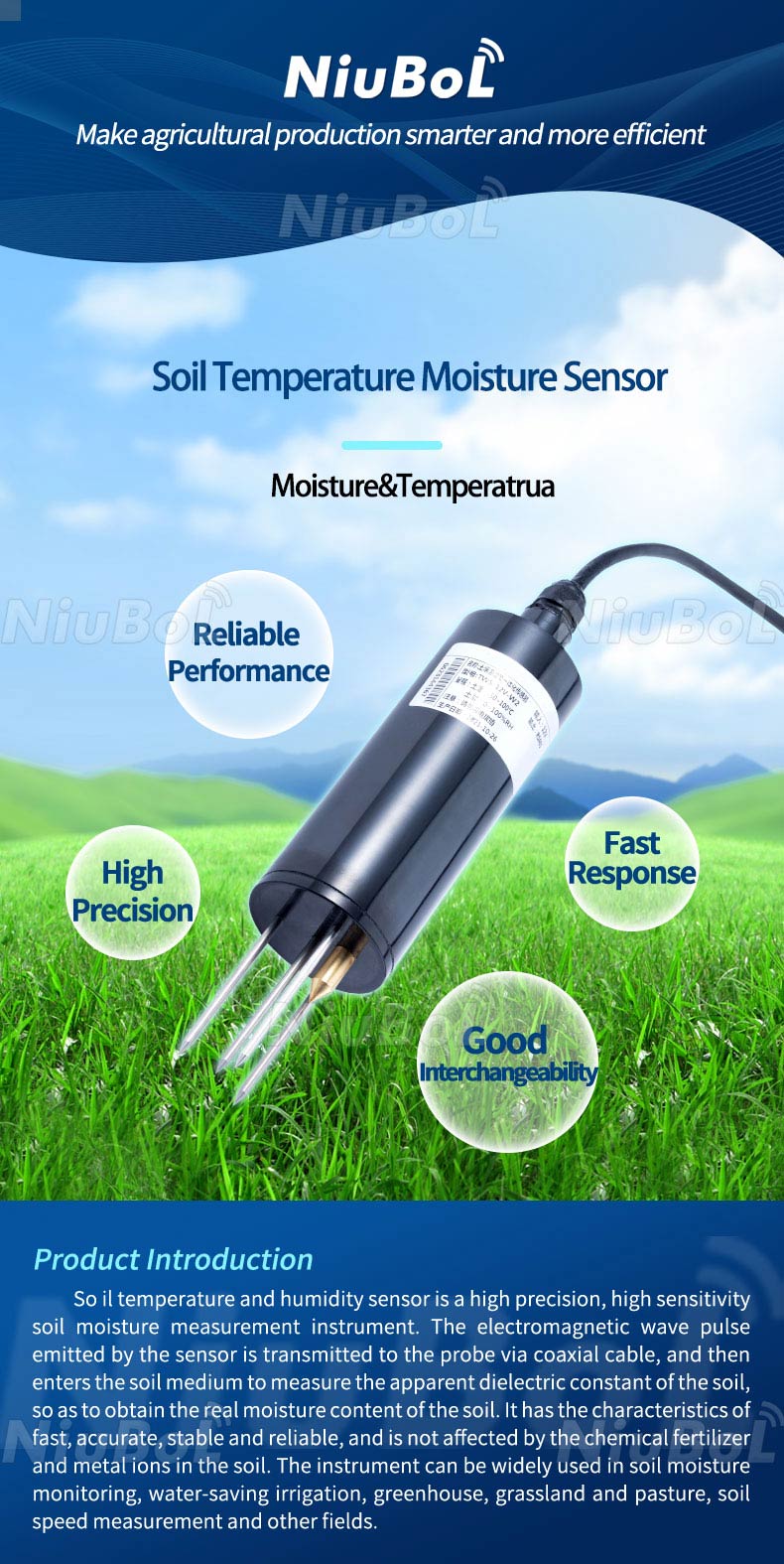
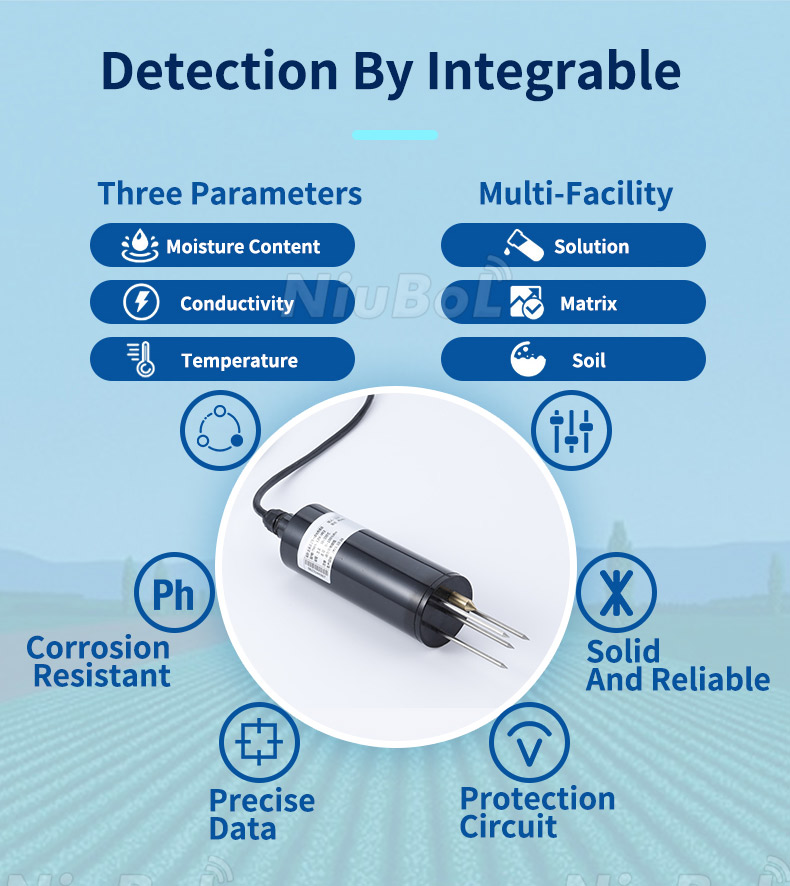
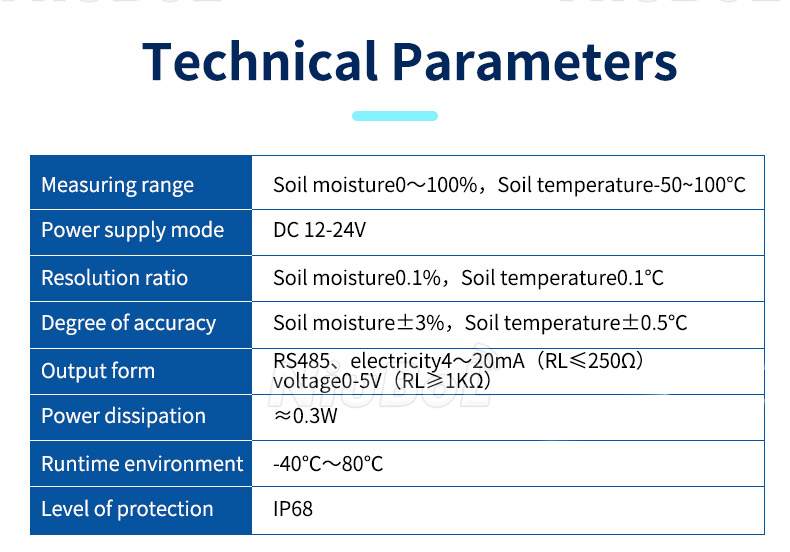
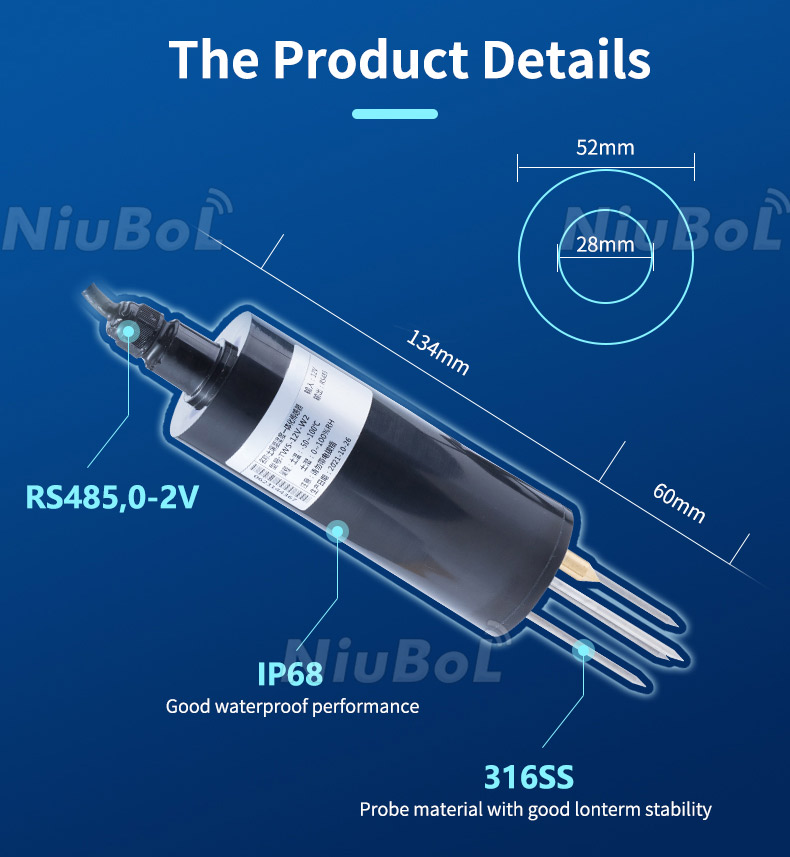
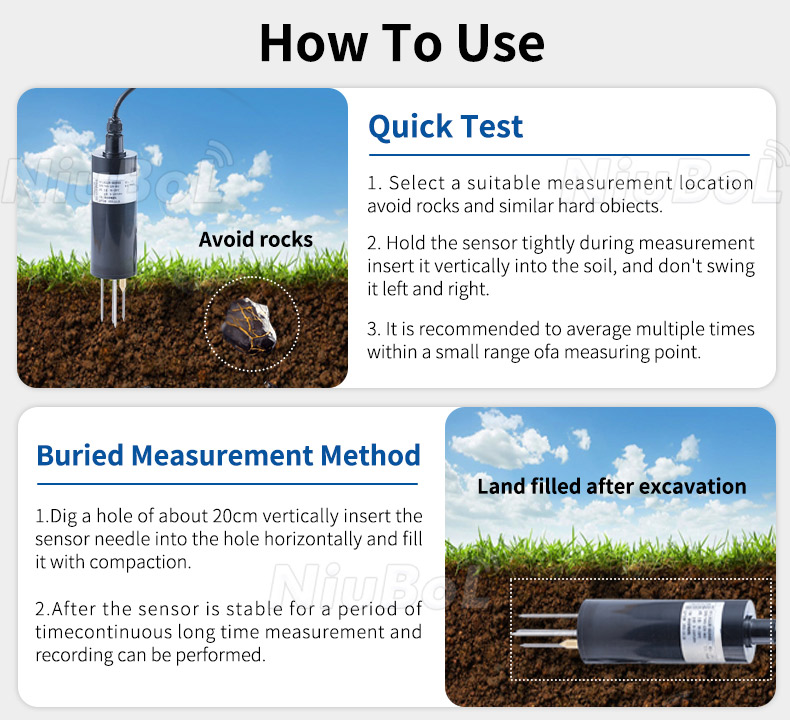
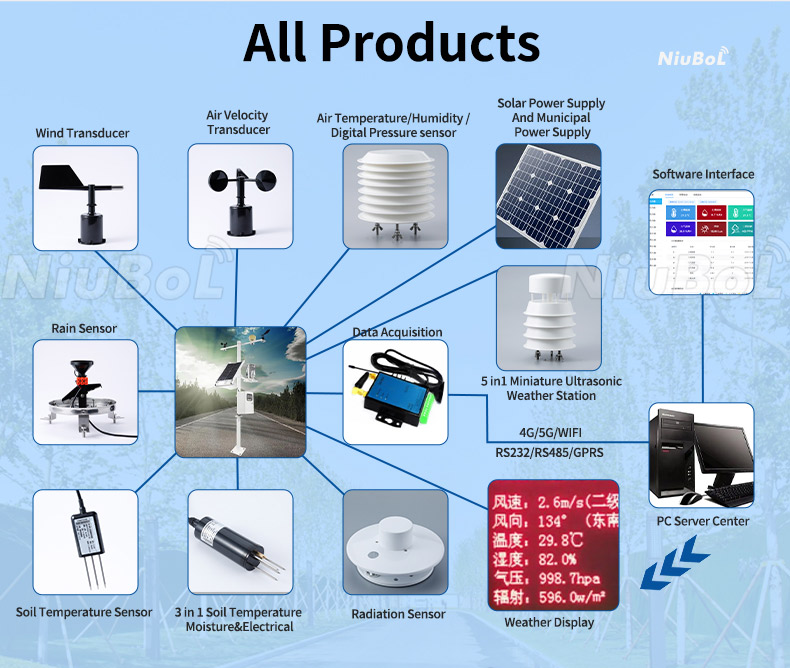
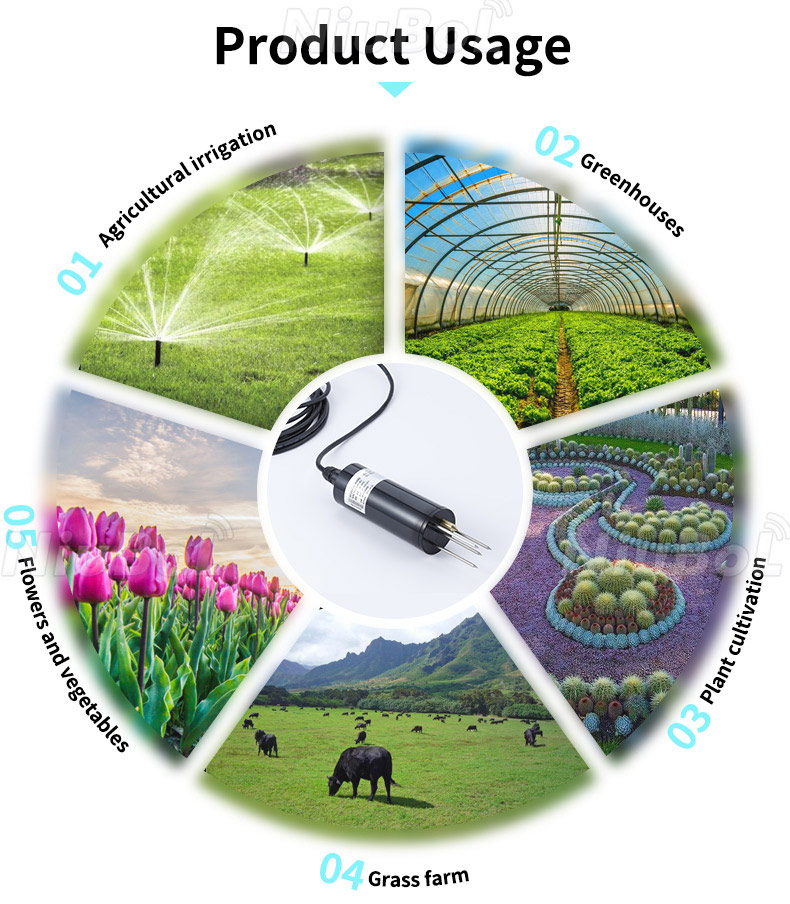
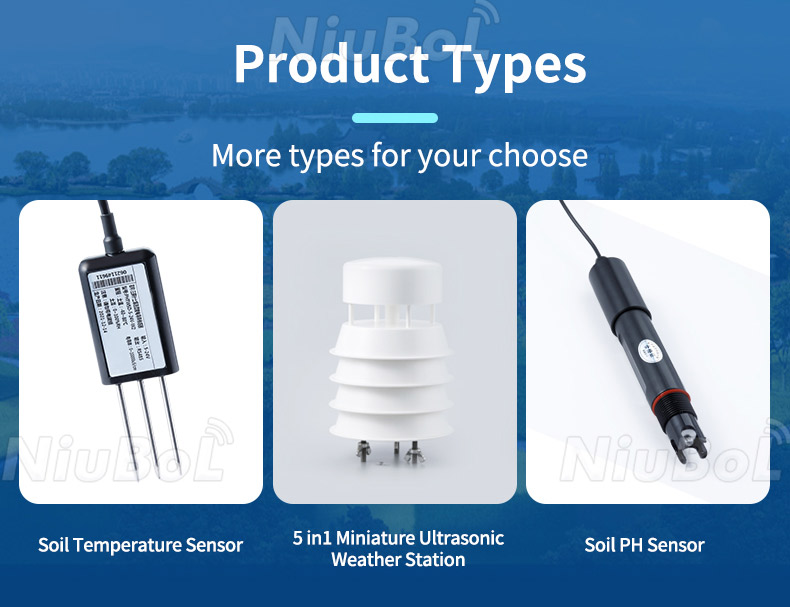
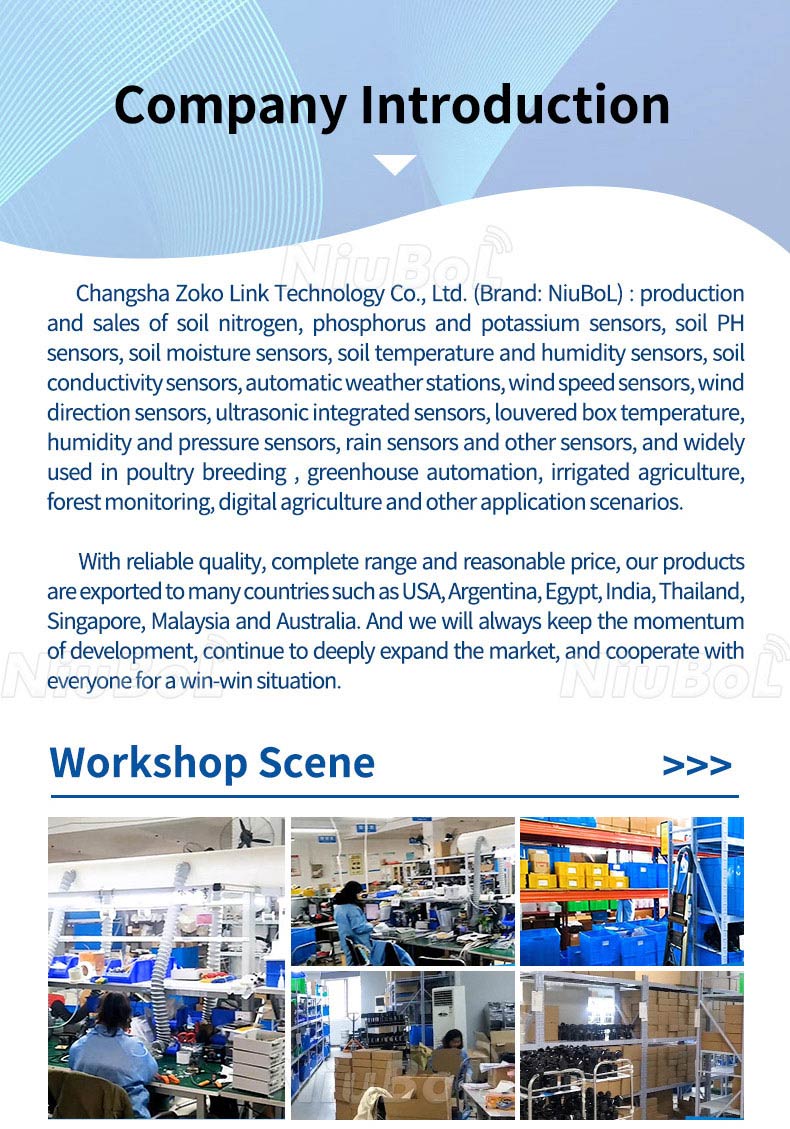
Soil moisture and temperature sensors work on different principles to measure the moisture content and temperature of the soil. Here are two commonly used methods:
1. Capacitive/Capacitance Method:
- Moisture Measurement: Capacitive soil moisture sensors utilize the principle of capacitance. These sensors consist of two electrodes that act as a capacitor. The dielectric constant of the soil, which is directly proportional to its moisture content, affects the capacitance value.
- When the sensor is inserted into the soil, the moisture in the soil infiltrates between the electrodes, changing the capacitance value. This change is then converted into a corresponding moisture measurement.
- The sensor's electronics convert the capacitance value into a voltage or digital reading, providing information about the soil moisture level.
2. Thermal/Resistive Method:
- Moisture Measurement: Thermal or resistive soil moisture sensors work based on the principle of electrical resistance. These sensors consist of two or more metallic probes that pass an electrical current through the soil.
- The moisture content of the soil affects its electrical conductivity. Dry soil has higher resistance, while moist soil has lower resistance.
- By measuring the electrical resistance between the probes, the sensor can determine the moisture level in the soil. The resistance value is then converted into a corresponding moisture reading.
- Temperature Measurement: In addition to moisture measurement, some soil moisture sensors also include temperature measurement capabilities. They typically have an additional temperature sensor, such as a thermistor or a thermocouple, which measures the soil temperature.
Soil moisture and temperature sensors are devices used to measure the moisture content and temperature of the soil. These sensors play a crucial role in various fields, including agriculture, environmental monitoring, and research.
1. Agriculture: Soil moisture and temperature sensors are widely used in agriculture to optimize irrigation practices and improve crop yield. By accurately measuring the moisture level in the soil, farmers can determine when and how much water their crops need, thus avoiding overwatering or underwatering. Similarly, monitoring soil temperature helps farmers understand the soil's thermal properties and make informed decisions about planting and harvesting times.
2. Environmental monitoring: Soil moisture and temperature sensors are essential for monitoring and managing natural resources. They help assess the health of ecosystems, predict drought conditions, and detect potential erosion risks. This information is valuable for land management, watershed management, and conservation efforts.
3. Research and development: Scientists and researchers utilize soil moisture and temperature data for various studies and experiments. They help in studying soil behavior, nutrient cycling, and soil-water interactions. Researchers also use these sensors to evaluate the performance of different soil types, agricultural practices, and irrigation techniques.
The value of soil moisture and temperature sensors lies in their ability to provide real-time data that can be used to make informed decisions regarding irrigation, resource management, and plant growth. By understanding the moisture content and temperature of the soil, users can optimize water usage, conserve resources, and enhance agricultural productivity.
Sensors & Weather Stations Catalog
Agriculture Sensors and Weather Stations Catalog-NiuBoL.pdf
Weather Stations Catalog-NiuBoL.pdf
Related recommendations
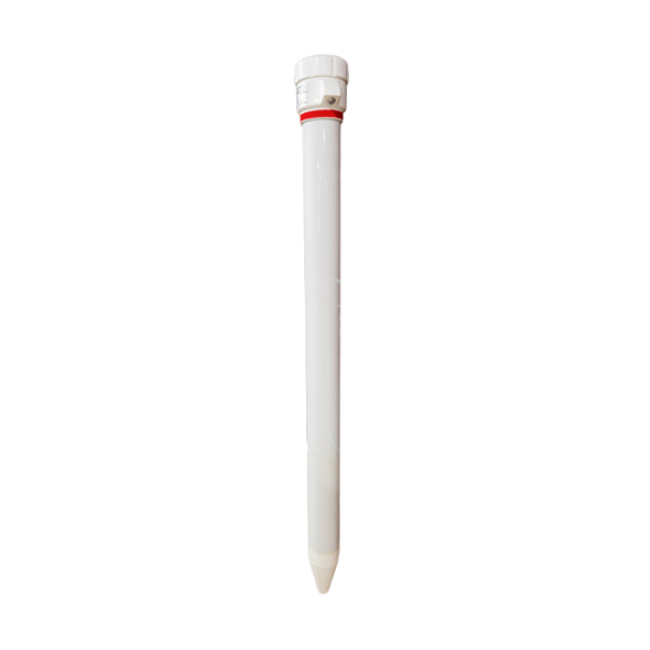 Multi-Depth Soil Sensor RS485
Multi-Depth Soil Sensor RS485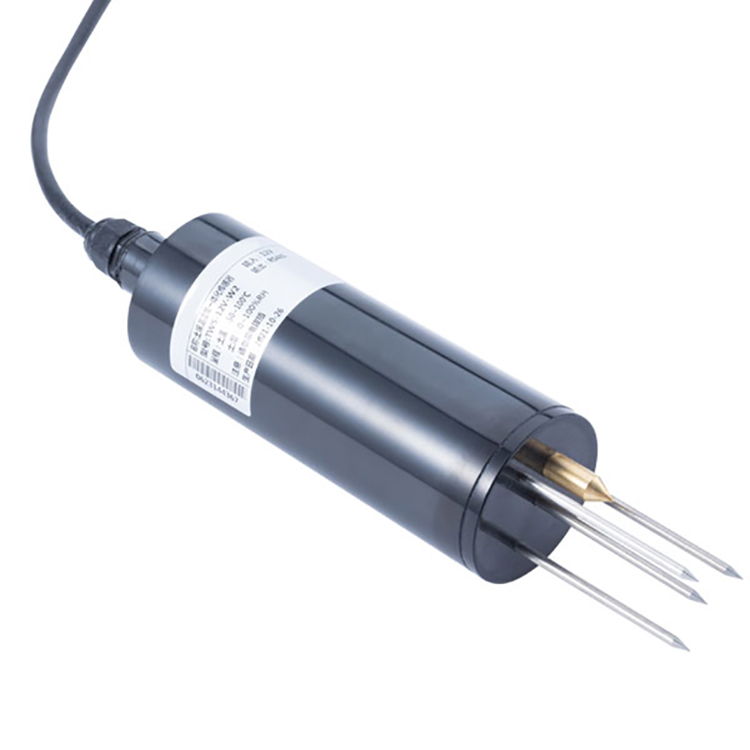 TDR Soil Moisture Sensor
TDR Soil Moisture Sensor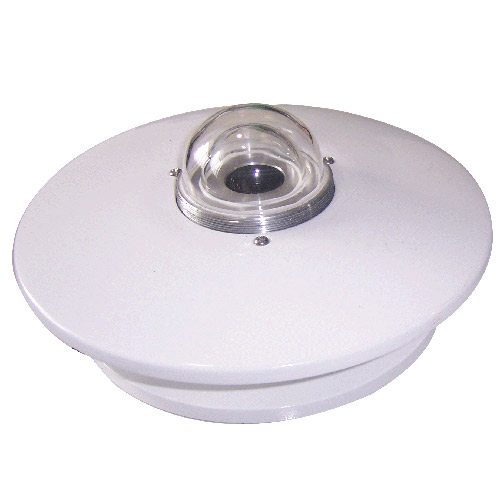 Pyranometer Solar Radiation Sensors
Pyranometer Solar Radiation Sensors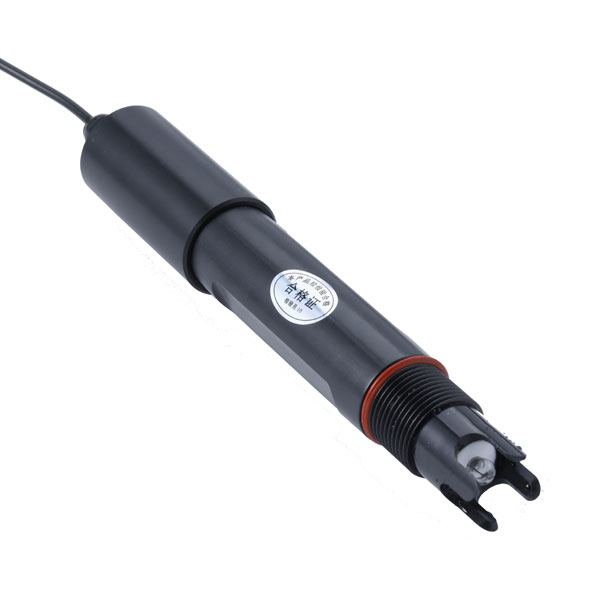 Soil ph sensor
Soil ph sensor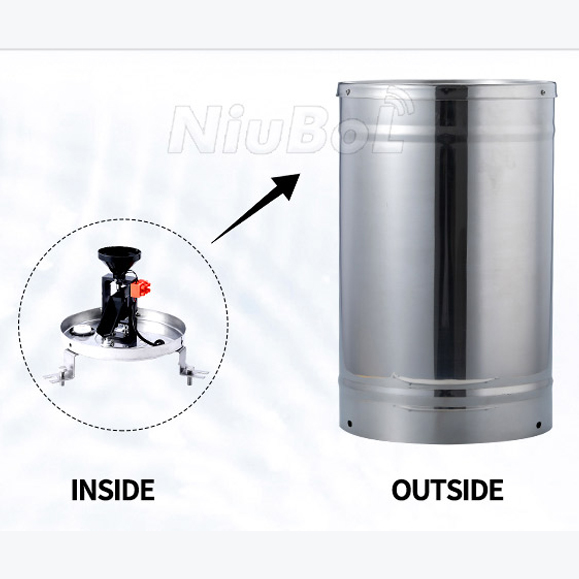 Tipping Bucket Rain Gauge
Tipping Bucket Rain Gauge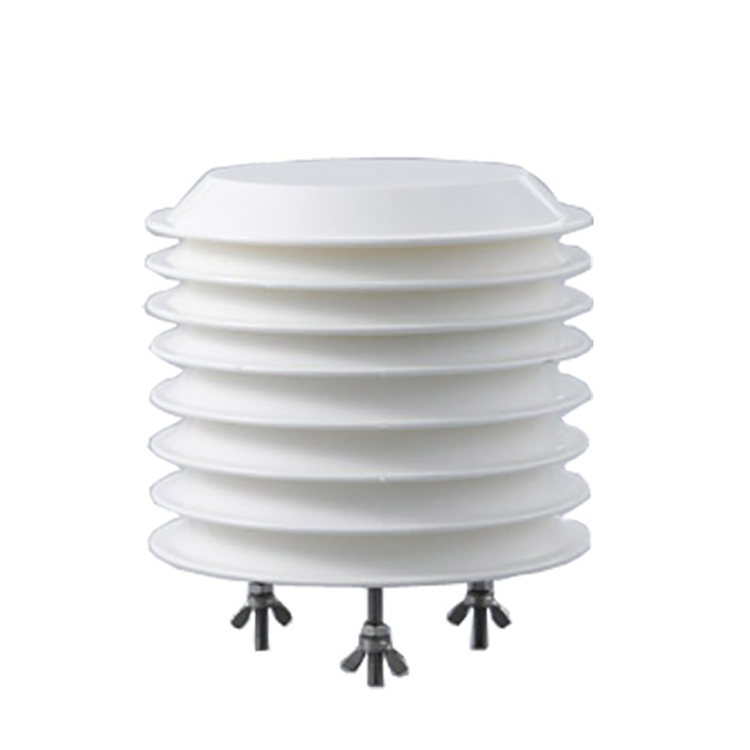 Air Temperature and Humidity Sensor
Air Temperature and Humidity Sensor
Screenshot, WhatsApp to identify the QR code
WhatsApp number:+8615367865107
(Click on WhatsApp to copy and add friends)
